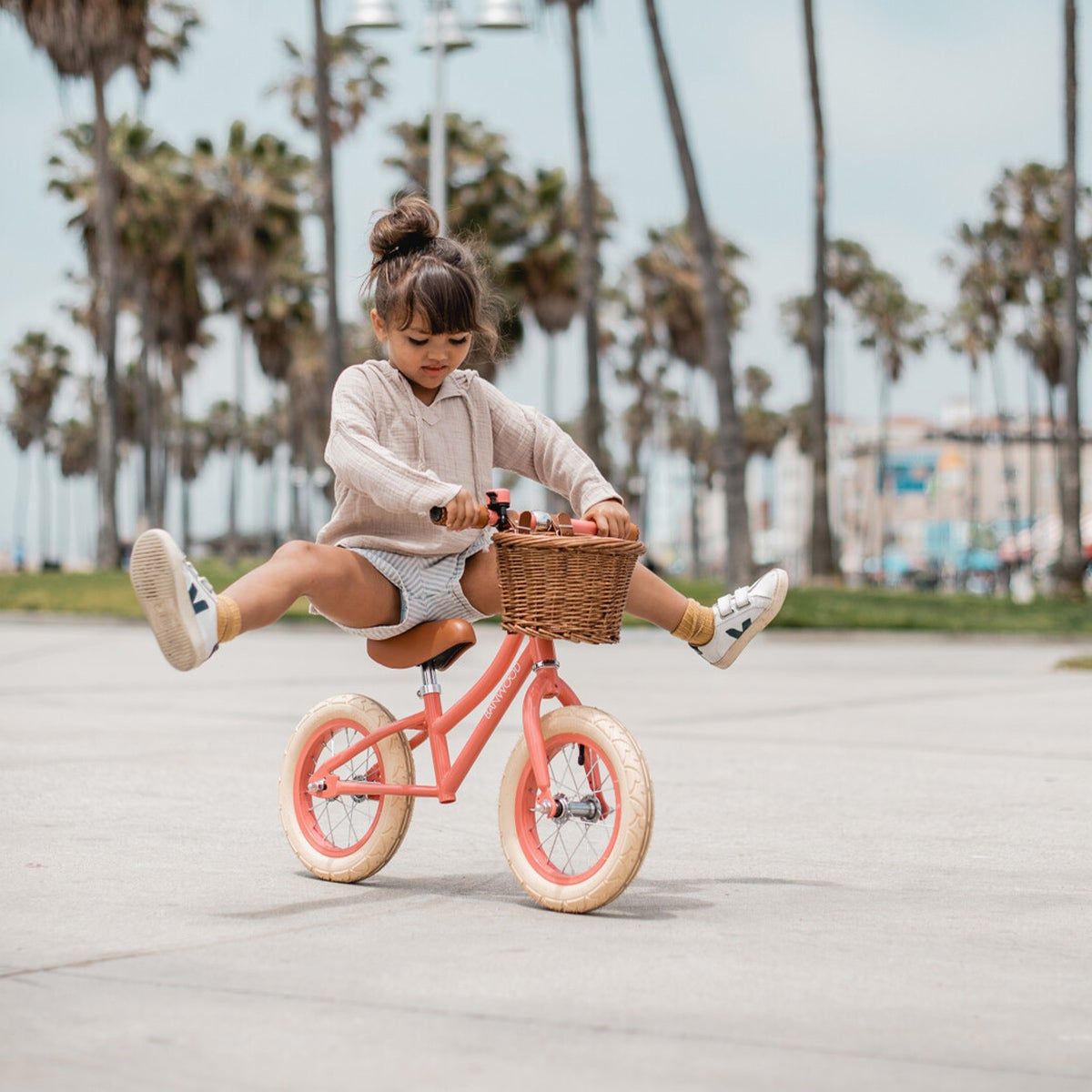
Ask An Expert
How to Teach Your Kid to Ride a Bike
- Written By
- Marnie Schwartz
Measure and size a kid’s bike
Kids bikes are sized by the diameter of the wheels, but that number doesn’t actually tell you that much when you’re deciding what bike to buy, says Varn. More important is the minimum seat height. That’s because when kids are first learning, they really need to be able to put their feet flat on the ground. Since the minimum seat height on bikes can vary quite a bit from brand to brand, she suggests measuring your child’s inseam and using that to decide what bike to buy. (For example, if his or her inseam is 18 inches, you need a bike with a minimum seat height of 18 inches or less.) Resist the temptation to buy a bike your little one can “grow into” as they really need the right size to be able to learn.
Once your child is riding confidently, you can gradually raise the seat (do it when they’re not around, and raise it just a half-inch at a time) until their tiptoes reach the ground when seated.
Start early, and start with a balance bike
Vern strongly prefers starting with a balance bike (and then going straight to pedaling on two wheels). “With training wheels… they have to unlearn the way they’ve learned to balance on them. If you never have them to begin with, you never have to unlearn.”
Between 18 and 24 months old is a great age for first introducing a balance bike, but don’t expect your 2-year-old to hop on and start gliding. Just let them explore the bike, whether that’s sitting on the seat, walking around with the bike between their legs, or even sitting down and spinning the wheels and ringing the bell.
If you can take them to a park or class where there might be other toddlers on balance bikes, they’ll start to put together what they’re supposed to do. “I recommend that parents stay pretty hands-off,” says Varn. “Let them take the lead and get increasingly comfortable with putting their bottom on the seat and their feet up for periods of time.”
If you’ve already used training wheels, don’t worry. Just take them off! And then use a wrench to remove the pedals from your child’s bike, too, and adjust the seat so their feet are flat to the ground. Then you can use it as a balance bike until they’re comfortable gliding.
When and how to introduce pedals
As soon as your child is proficient on the balance bike and is gliding for long stretches, you can start transitioning to pedals. Some kids reach this point as young as age 2, but for most it’s sometime around 3 or 4 years old, says Varn.
Before you put the pedals on (or back on), make sure they can glide for at least five yards, and that they’re also confident with turning. Once you do put the pedals on, still have them glide like they did on the balance bike, so they get used to having the pedals there.
Getting them to ride independently
Once your child is gliding well on the pedal bike, instruct them to hop their feet up to the pedals without looking down. Ideally, you’ll do this with as little adult assistance as possible. But if your child needs some holding, make sure to do it evenly on both sides, says Varn. (So don’t hold the bike by one handlebar, and if you’re holding the child, hold the back of their shirt rather than under one arm.)
Most kids start out pedaling really slowly, so encourage them to “just keep pedaling!” Remember that equally important to pedaling is controlling speed and stopping. Without those skills, kids can develop a fear of riding because they don’t feel in control, warns Varn. So reinforce the concept of slowing to stop, even when they’re not on the bike, like with games such as “red light, green light.” And stay away from hills until they can control speed well.
Safety first!
Even more important than a well-sized bike is a properly fitted helmet. “Kids have different shape and size heads, so don’t hesitate to try some options,” says Varn. You want coverage directly above the eyebrows, good coverage in the back, and a small visor in the front. Make sure it’s one that your child likes and is excited about wearing, and make sure it’s fitted correctly. (If it’s bothering them, or they feel suffocated or complain about the fit, then you don’t have it adjusted properly.)
Close-toed shoes are also key, and long pants are preferable to shorts when kids are learning since there will be falls along the way. Sunglasses are also good for eye protection, as sometimes kids struggle with looking up and forward because the sun is in their eyes, says Varn.
There will be stops and starts, but stick with it and enjoy!